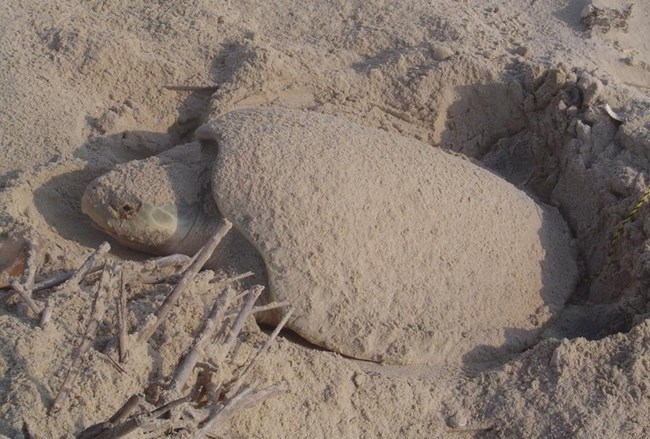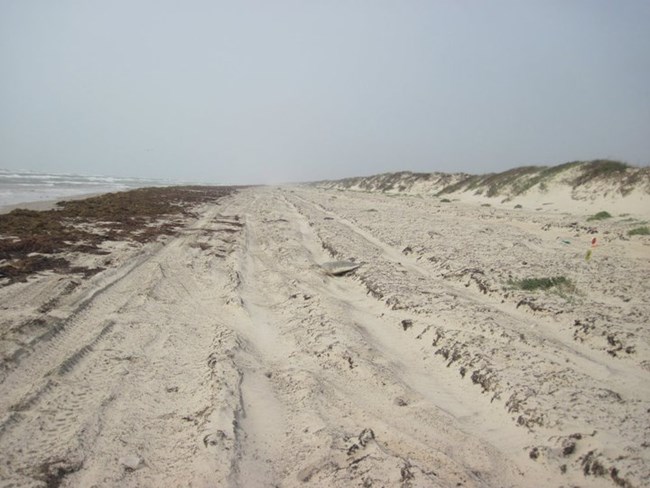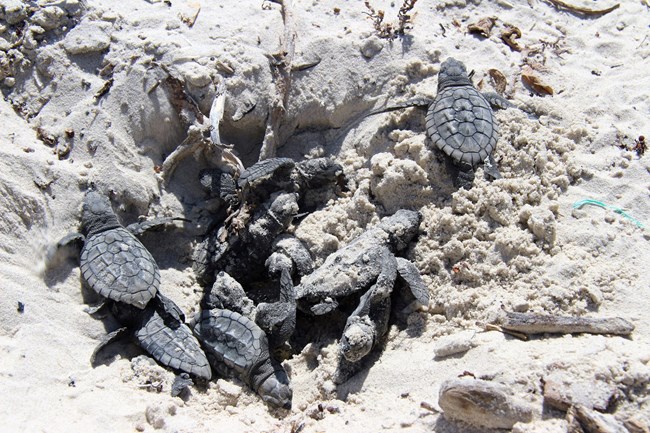Nesting Habits of Kemp's Ridley Sea Turtles
NPS Photo. Here in Texas, Kemp's ridley sea turtles emerge from the sea to lay their eggs in the sand from April through mid-July. In Mexico, the nesting season is a little longer with nests being found from March through August. 
NPS Photo. When emerging from the ocean and crawling up the beach, nesting turtles are cautious. If you see a turtle on the beach, do not rush up to her or you may frighten her back into the water without nesting. While depositing eggs, Kemp’s ridleys enter a trance-like state during which time they are oblivious to what it is going on around them leaving them particularly defenseless to threats like predators or vehicle traffic on the beach. At any time during the nesting process they will not and cannot move quickly to avoid a passing vehicle and can be crushed and killed. They sometimes nest in vehicular tire ruts and this, combined with their camouflage, increases their vulnerability to vehicle traffic. Habits of Emerging Kemp's Ridley Hatchlings
NPS Photo. Occasionally, Kemp's ridley nests are not found at egg laying and incubate unprotected in situ (or, in place) on the beach. This can happen two ways. In one situation, tracks from the nesting turtles are found, but the nest cannot be located so the suspected nest site is marked and biologists return to monitor for signs of nest predation or hatching. In the other situation, nests are found predated or hatched at sites that biologists have no previous knowledge of. Hatching success and survival of hatchlings is typically reduced for these in situ nests compared to protected nests. 
NPS Photo. |
Last updated: June 8, 2023
